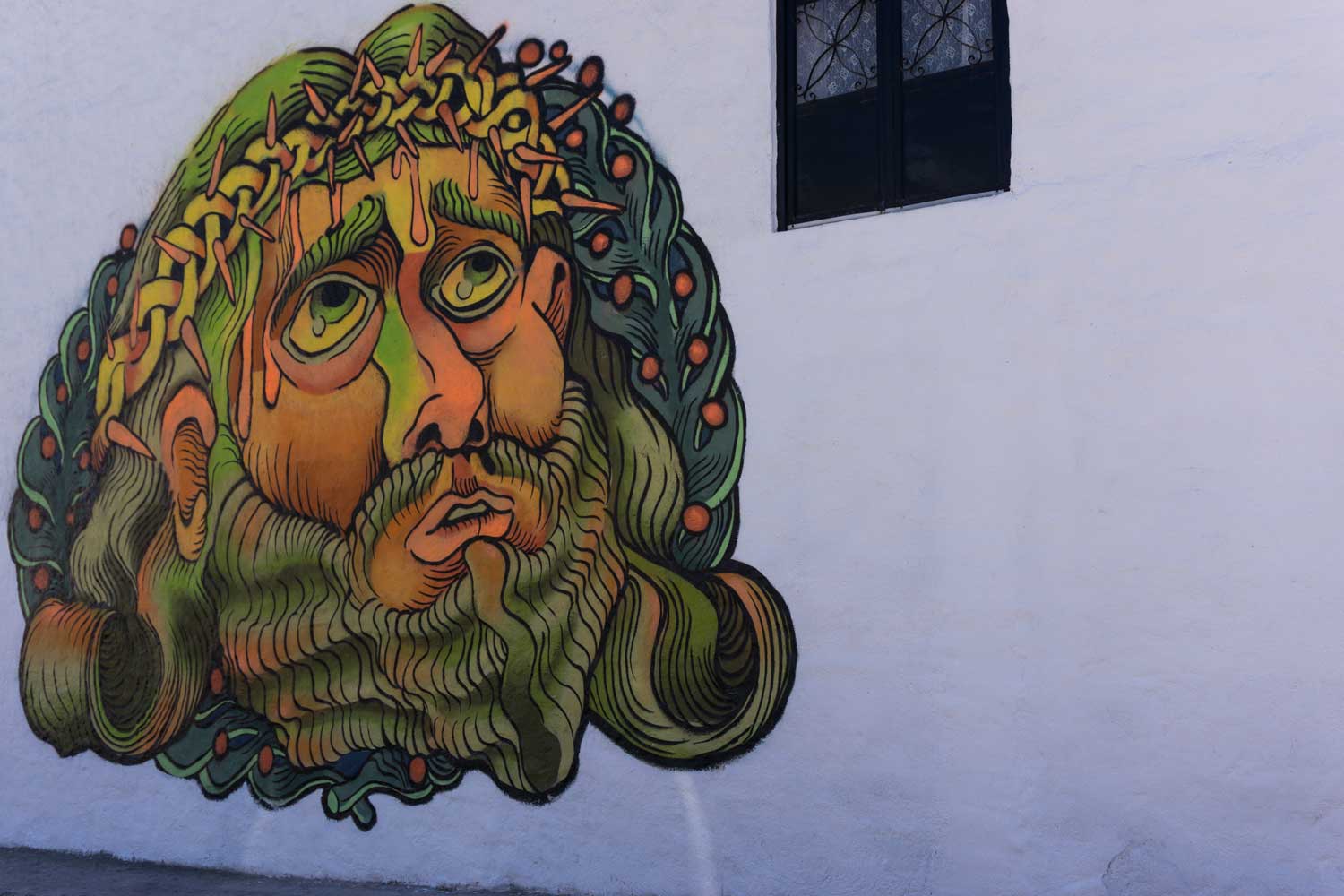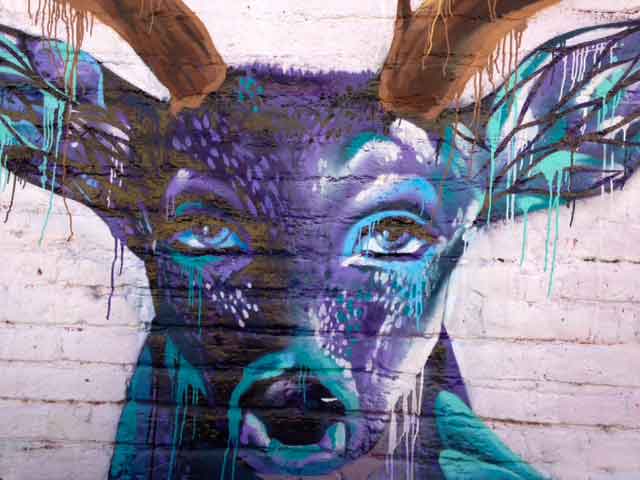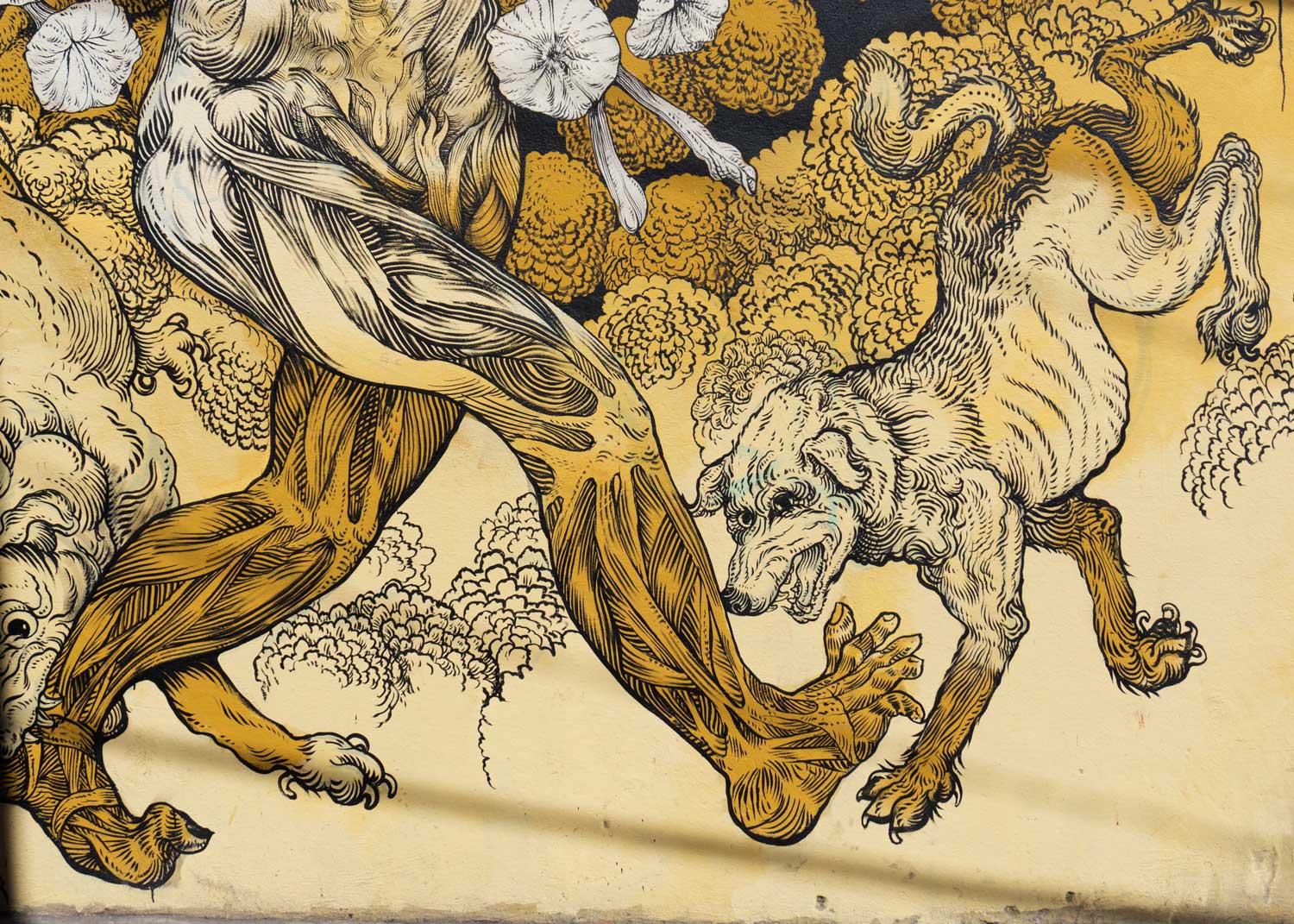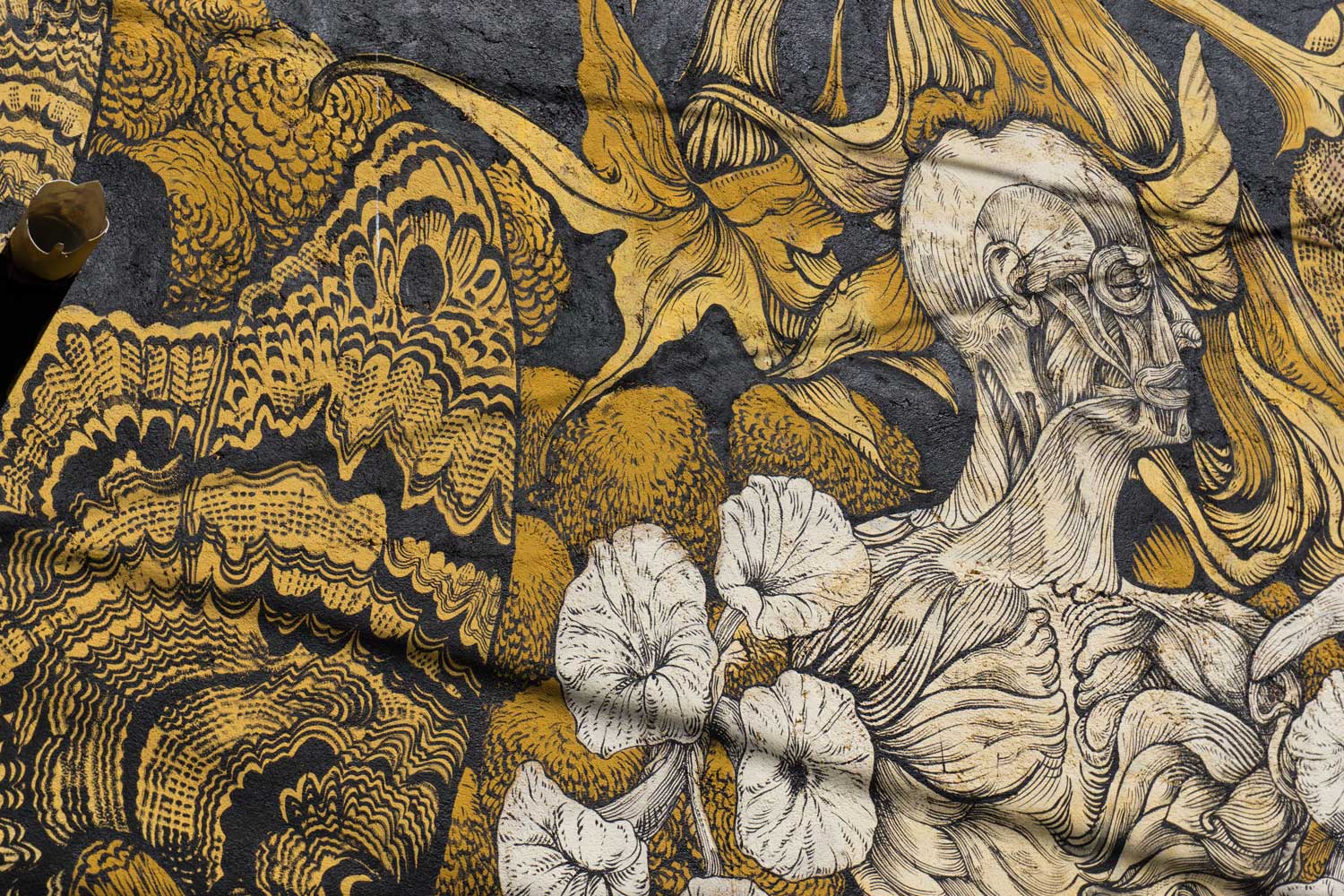San Miguel's Street Art Part 2





While sipping a cappuchino one cool morning at the café Buen Dia, in San Miguel de Allende, Mexico, Colleen Sorenson, a tall attractive woman with a full head of straight salt and pepper hair, spoke about the issue of “tagging” in town. Naïve as I am, I had never heard the term. However, thinking back to New York’s subway cars before graffiti became an art form, I had noticed a profusion of it here over the past few years. (With some research I also learned that the term, graffiti comes from the Italian verb “graffiare” as in to scratch. The word caught on in the mid 1880’s when an archeologist used it for describing markings on the walls by the Romans.)
A few years ago, in Colleen’s concern about sheer wall vandalism, she decided to do something. “There was a real problem with these kids using crayons and markers on street walls. For one they’re hard to remove…”
With her background as an artist working primarily with disenfranchised young people in public art projects in San Antonio, Texas, her goal became to also bring Mexican youth into “a more creative form of self-expression.”
“When I started this project in 2011, I approached “Siempre Hermoso” a local organization directed by Filip Lein that had been attempting to tackle the growing issue of wall vandalism. “But they were simply painting over it,” added Colleen.
Seeking to build a relationship of trust and cooperation with one of San Miguel’s neighborhoods outside the Centro, a UNESCO World Heritage Site under strict regulations, they contacted the Director of Tourism. After much deliberation with other municipal authorities as well, they were asked to arrange a street art festival. This led to establishing a Districto de Arte in the colonia or neighborhood of Guadelupe located near La Aurora, a former textile factory turned art “mall” with a plethora of chic galleries and antique stores.
Before launching the first festival in 2012, they got the local residents who would be approached on board, obtained necessary permits (a long term process since Mexico is known for its bureaucracy), as well as raise funds. They were lucky: for the first year the city provided the pesos for the materials and PR. With the suggestion of one of the artists, the festival, embarking on its fourth year became known as “Muros en Blanco” or “The Festival of White Walls”. And why the term blanco? It also means “blank”.
How were the artists chosen? A local street artist, Francisco "Nadie" Vega, contacted artists in San Miguel and throughout Mexico. “When others found out what we were doing, they asked to participate,” according to Colleen. Then, a couple of years later, other organizers followed suit. In 2015 the Calaca Festival got on the bandwagon. Jesus Valenzuela who goes by the name of JUICE brought in artists of high caliber from as far away as Japan. They also expanded the locations to include other colonias or neighborhoods such as San Rafael. (Most of the works here were made in 2015.)
Still, what about the problem of vandalism by bored, marginalized kids? In Colleen's opinion when walls, many previously in a sorry state, turn into "canvases", tagging is no longer as attractive. For sure in Guadelupe with its plethora of wall art, little graffiti has caught my eye recently. And, as she points out: “Local kids love the energy of the artists and help out.” This is one of her main purposes: to get kids involved in art and not vandalism. It clearly seems to be working.
“Every time I see a new "independent" wall, I feel so darn proud. The door has been opened to expressing a creative voice,” she says.
Are there certain parameters the artists must follow? According to her, they must be respectful and secure the permission of the property owner as well as follow rules such as no pornography or reference to drugs. “None of the Mexicans whose walls are now painted have complained,” states Colleen.
For sure the movement is growing larger as it expands into other neighborhoods and attracts new artists. Thus in 2015, “Muros en Blanco”, joined the production team, “Graffitiworld”. As their website states: “With the inclusion of Mexican and foreign world-class artists visiting the city during the festival and throughout the year and the invaluable participation of Nine Urban Art , main promoters of Urban Art in the Queretaro, 'Muros in White' will seek to strengthen the reputation of San Miguel de Allende, Mexico as one of the most important points for the world public art.”
To read Part 1: http://www.honeysharp.com/new-page-74-2
Other sites to learn more about Mexico's street art:
Muros Blanco: https://www.murosenblanco.com/ and https://www.facebook.com/murosenblanco.distritodearte.7
GraffitiWorld https://www.facebook.com/graffitiworldtv/






